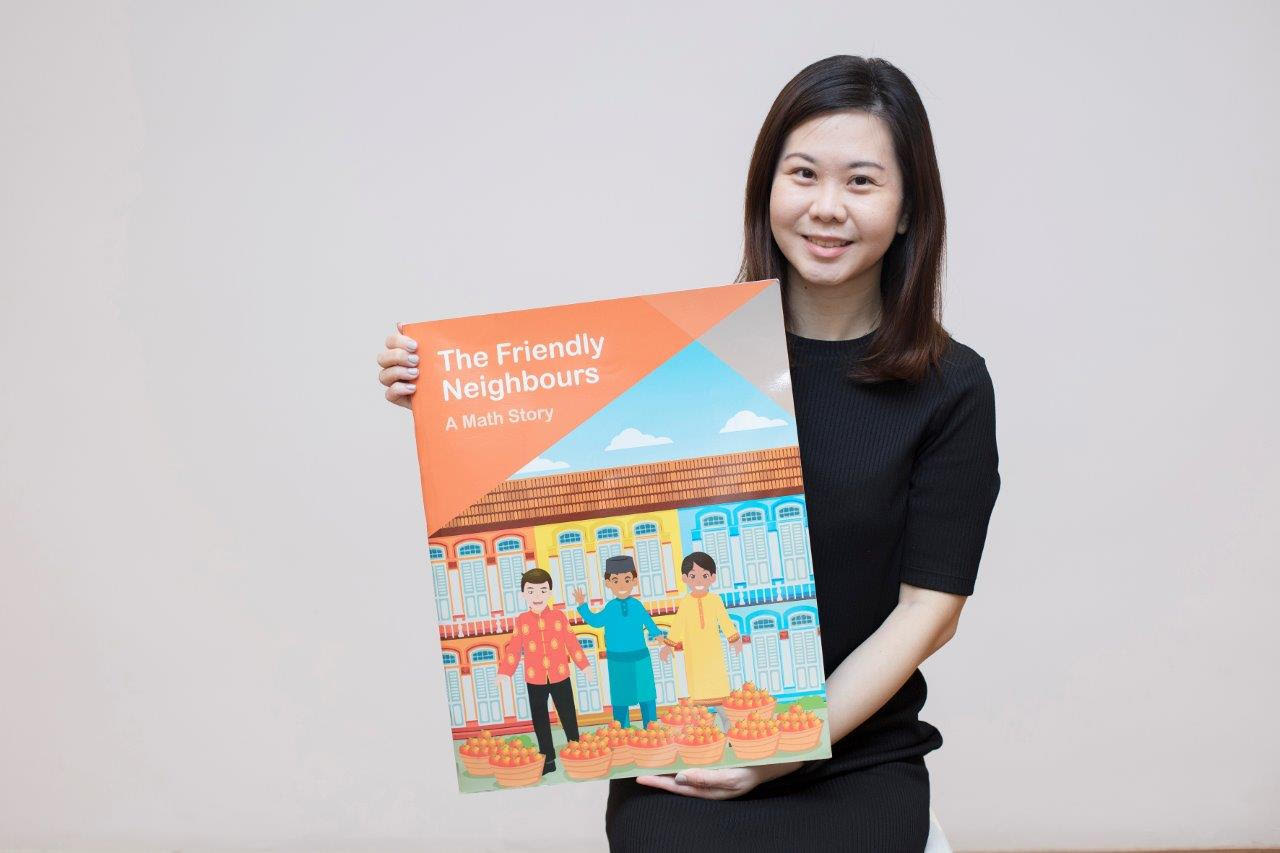Adeline Boon Xue Fang, St. Hilda’s Primary School, Outstanding Youth in Education Award 2021 Finalist
“You have been given $6 to buy correction tape. Which brand should you buy?”
As I posed this question to my Primary 4 Mathematics class, four brands of correction tape laid before them on their tables. “Is the most expensive one the best? And the cheapest, the worst?” I asked. Some of them nodded their heads, while others looked unsure.
To solve the problem, they first had to identify factors that would affect their purchase. They pinned them down to price, special features such as whether it was refillable, and length for grip. Next, they had to rank, on a scale of 1 to 5, how important each factor was to them.
I also arranged for my students to try out the correction tapes so they could assess each model better. The final step was to draw up a table to compare the features and work out their weighted scores, which put their multiplication skills to the test. At the end of the exercise, some students realised that the most expensive brand may not be the one that suited their needs.
My students love the correction tape problem because it is a dilemma they often face at the bookshop! They also learnt that mathematical concepts such as tables, graphs and money can help them make better decisions in real life.
Mathematics in Everyday Life
Can stories teach Mathematics? To make Math relatable, I turned to storytelling. Together with my colleagues, we wrote 3 Mathematics Big Books for both lower and upper primary school students.
For example, one story that we used to teach the topic of rates is about a boy called Samesh who visited the Singapore Philatelic Museum with his grandfather. At the museum, he learnt about stamps, postal services, and how to calculate local mail rates.
In these stories, we always make it a point to include scenarios and places that reflect our local context, so students can easily identify and connect with the characters. There are also colourful and cheerful illustrations to accompany the text.
When I was a Math representative in the department, I worked with lower primary teachers in my school to convert spare rooms in the school into Mathematics Learning Centres. In these rooms, Primary 1 students get to play different characters such as bookshop owners, canteen stallholders and customers. We created ‘play money’ for them to buy and sell items.
Through such pretend play, they learnt to identify different values attached to notes and coins, and how to calculate the amount of change they should receive using simple addition and subtraction.
Fun with Numbers Based on Different Learning Styles
Every student has a different learning preference. Some respond well to visuals like pictures, while some prefer verbalising their thoughts, and some learn better when they get to move around or participate in an activity. When I use play to engage my students in learning, it allows me to incorporate all these elements in the lesson.
For a lesson on area and perimeter, I got my students playing with Ozobot, a palm-sized robot. Working in pairs, the students were given a sheet of grid paper to draw three rectangles using a thick black marker. Each rectangle had to take up 18 square units – but they could decide how long the length and breadth of each one should be.
Next, my students would set the Ozobots free on the
piece of paper. The Ozobots were programmed to respond to black ink, so they would whizz round the perimeter of each rectangle. The students had to time how long it took for their Ozobots to travel around each rectangle. From this activity, they realised that even though all the rectangles had the same area, their Ozobots took different durations to cover the perimeters.
Thanks to their new ‘math buddies’, they understood that rectangles with the same areas did not necessarily have the same perimeters – contrary to a common misconception that students have.
I believe that learning through play can happen anytime, anywhere. That is why I co-designed a giant floor game and activity booklet for our school called the ‘100 Numbers Game Chart’ inspired by ‘Snakes and Ladders’, where moving across the board requires solving sums involving addition, subtraction, multiplication and division.
I also teamed up students who are strong in Mathematics with the weaker ones, to encourage them to help one another along. I was heartened to see students entertaining themselves with the game during recess, and even coming up with their own variations.
Balancing Act for Student Leaders
As the student leadership coordinator in my school, I oversee the development of student leaders. To make the training sessions more engaging, I adapted a set of science challenge cards from James Dyson Foundation and used it to teach leadership traits.
An example of a challenge card: make two ping pong balls ‘float’ in mid-air using a hair dryer. This is a pretty tricky activity that involves great balancing skills!
That is precisely what we want our students to learn. As leaders, they have to juggle different tasks, so how do they find their balance? This activity leads to conversations on the importance of self- and time-management, and to find equilibrium in their lives.
To me, learning through play goes beyond just games, manipulatives and fun activities. It is the approach I adopted to keep students engaged in learning. That is why I always make room for playful exploration. Through meaningful play, I hope my students will develop curiosity and creativity, learn to work collaboratively with others, and find the joy in learning.






